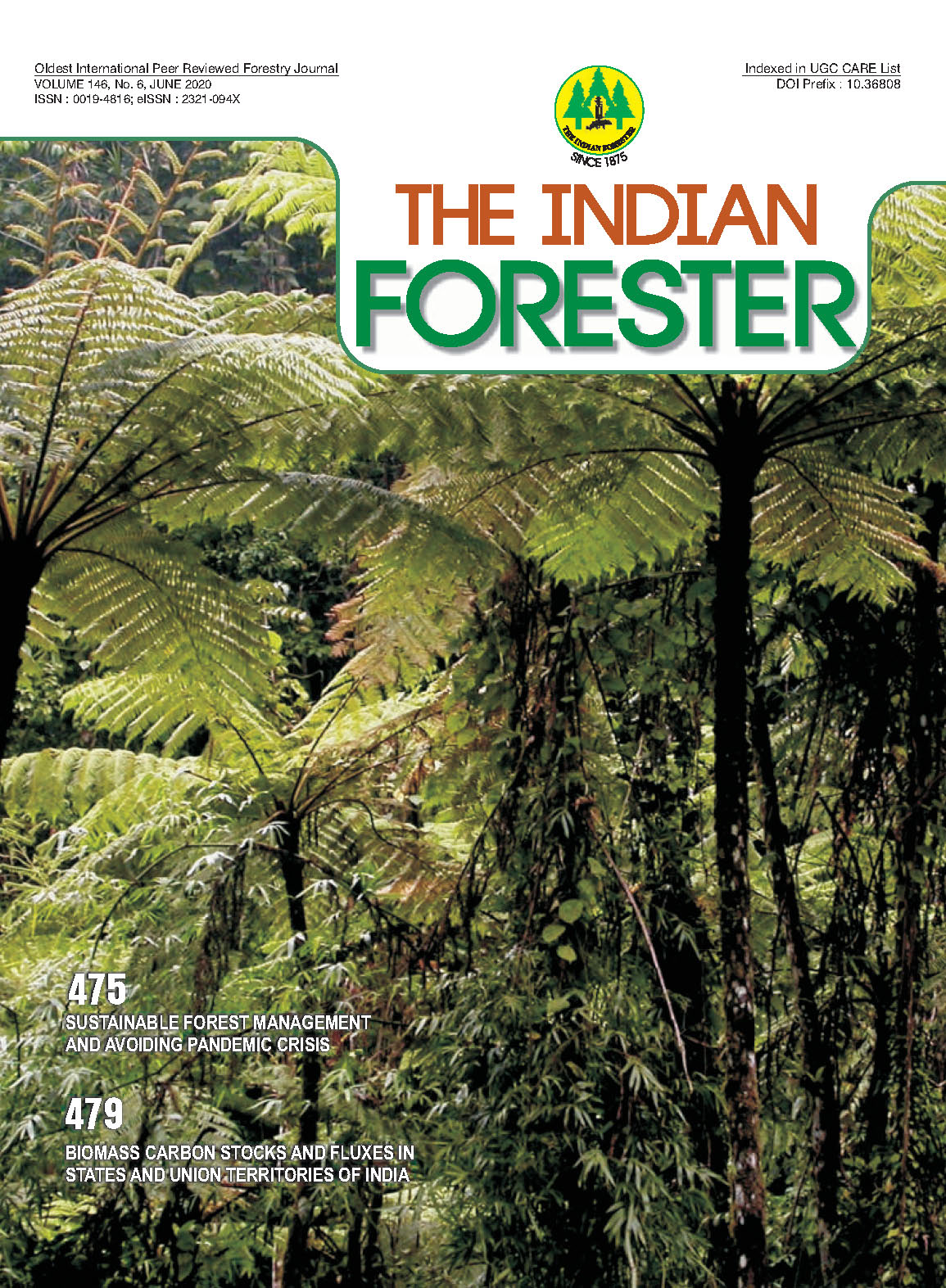Quantitative Assessment of Dendrocalmus strictus Bamboo Resource of Punjab and Management suggestions: Case study in Dasuya Forest Division
DOI:
https://doi.org/10.36808/if/2020/v146i6/149542Keywords:
Dendrocalamus strictus, Congested Clump, Working Circle, Rehabilitation Working Circle.Abstract
An investigation was carried out on Dendrocalamus strictus for immediate need of bamboo working in Dasuya Forest Division of Punjab. A total of 3,16,970 clumps were assessed. The study revealed that more than 50 percent of bamboo clumps in this division are dying due to heavy congestion (non working). Whole of the bamboo forests were divided into bamboo working and bamboo rehabilitation working circles. Though the average percentage of congested clumps come to 54.23, the compartments having less than 50 per cent congested clumps were allocated to Bamboo Working Circle and where the congestion was more than 50 per cent, the compartments were allocated to Bamboo Rehabilitation Working Circle. It was also found that bamboo clumps were getting weak due to invasion of termites and grazing. Regeneration of bamboo was also found very sparse. If the congested clumps are not allocated for working in the present working plan, their quality will be deteriorated as they get dried, attacked by termites, wind, fire and get decomposed.References
Anon., (2010). Forest Sector Report of India 2010. Indian Council of Forestry Research and Education, 2010, Dehradun.
Banik R.L. (2015) Harvesting technique In: Liese W and Kohl M (eds). Bamboo-The plant and its uses, Tropical Forestry Series. Springer Hamburg Germany, pp 193-226. DOI 10.1007/978-3-319-14133-6_7
FRI (2016). Working Plan of Karanpur, Bindraban and Nandbir Forests of Dasuya Forest Division for the period 2014-15 to 2028-29. Prepared by Forest Research Institute, Dehra Dun.
FSI (2011). India State of Forest Report-2011. Forest Survey of India, Dehradun.
FSI (2017). India State of Forest Report-2017. Forest Survey of India, Dehra Dun.
MoEF and CC (2014). National Working Plan Code-2014. Ministry of Environment, Forest and Climate Change, Government of India.
Troup R.S. (1921) The Silviculture of Indian trees, Dendrocalamus strictus Vol.III, Oxford, at the Clarendon Press, pp 978-1000.
Varmah J.C. and Bahadur K.N.(1980). Country Report and status of Research on Bamboos in India. indian For Rec. Vol.6(1) (n.s.) Botany. FRI and Colleges, Dehradun.
Downloads
Downloads
Published
How to Cite
Issue
Section
License
Unless otherwise stated, copyright or similar rights in all materials presented on the site, including graphical images, are owned by Indian Forester.





